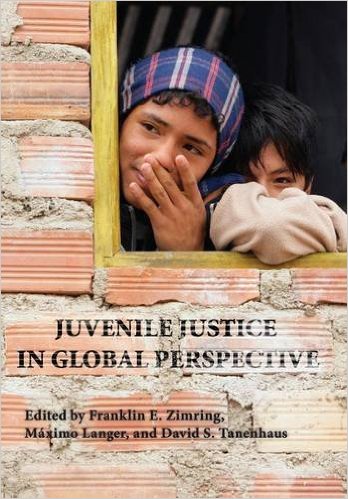Edited by Franklin E. Zimring, Maximo Langer, David S. Tanenhaus
New York University Press, 2015
416 pages
 Within the world of juvenile justice, law enforcement and corrections officials are re-examining theories and punishments associated with juveniles. This book is a valuable resource for academic courses designed to compare and contrast juvenile justice systems and gain an appreciation of how different cultures approach juvenile justice.
Within the world of juvenile justice, law enforcement and corrections officials are re-examining theories and punishments associated with juveniles. This book is a valuable resource for academic courses designed to compare and contrast juvenile justice systems and gain an appreciation of how different cultures approach juvenile justice.
But the potential audience also spans the judicial and general interest sectors. The text is organized, balanced and investigates a global concept of juvenile justice systems through the centuries.
Historically, children were considered property and had no legal rights. But over time, world community norms and the United Nations’ concept of acceptable juvenile justice have modified cultural and historical punishments.
One example is the U.S. ratification of the 1989 United Nations Convention of Rights of the Child Treaty, which decreed that individuals under 18 cannot be put to death by a court of law.
In contrast, under the Code of Hammurabi, Hindu law and English common law, the age of responsibility was 7 for boys and 9 for women. At 10 a child could be sent to adult prison and minors did not have the right to legal representation
The book reinforces the concept that as nations enter the world community their approach to juvenile justice evolves from their historical laws to the concept of cognitive development.
Case studies illustrate how each region responds to the onset of increased violent crimes by juveniles.
The response worldwide has been to stem the tide of increased juvenile crime by holding parents responsible for the actions of their children, establishing boot camps and developing education models designed to counter deviant juvenile behavior. Restorative justice is an outgrowth of reducing confinement of juveniles and making their victims whole.
Europe, the Middle East, Asia and South America have modified their juvenile justice system to treat the child as an individual, rather than a responsibility of the state.
European and Scandinavian laws and court systems began to reflect a change to a welfare and justice model for youth entering the juvenile justice system. The driving mechanism for this was the U.N. treaty. The judicial aspect of this approach is that juveniles take responsibility for their actions, which introduced diversion, decriminalization and due process into the process.
In China the administration of juvenile justice was influenced by population transfer from country to city. The Mao mandate of one child per family also created new challenges for the judicial system. Historical punishment norms included caning.
In Latin America the juvenile justice system did not begin until the 20th century with the importation of the U.S. model in 1919. There was no empirical assessment of outcomes, and youths under 18 were institutionalized in secure facilities. This is a reminder of the American colonial system, under which a child could be executed or confined to a prison.
The book also delves into how political change impacted the global juvenile justice system. The Polish history of juvenile justice was influenced by the Soviet Union. South Africa’s juvenile justice system is an outgrowth of its apartheid system, under which minorities had no legal rights.
Japan and South Korea’s judicial systems were influenced by the United States and experienced similar legislative changes. These geographical regions have a commonality of influence from an external power and are entering a new area of self-awareness.
The constant theme that the global community is forcing countries to reconsider their approach to juvenile justice is of note.
James W. Beeks Sr. is professor and lead faculty chair of criminal justice at the University of Phoenix and adjunct professor at Kennesaw State University.
More related articles: